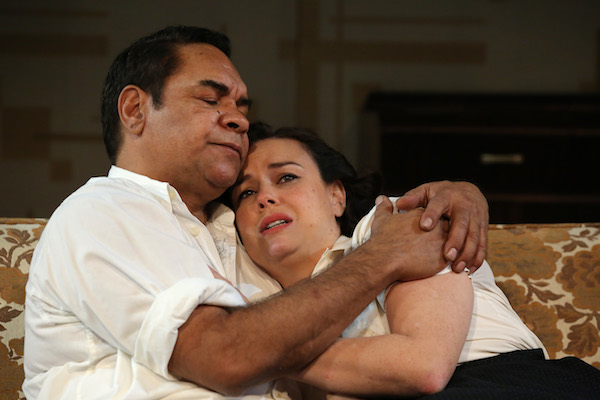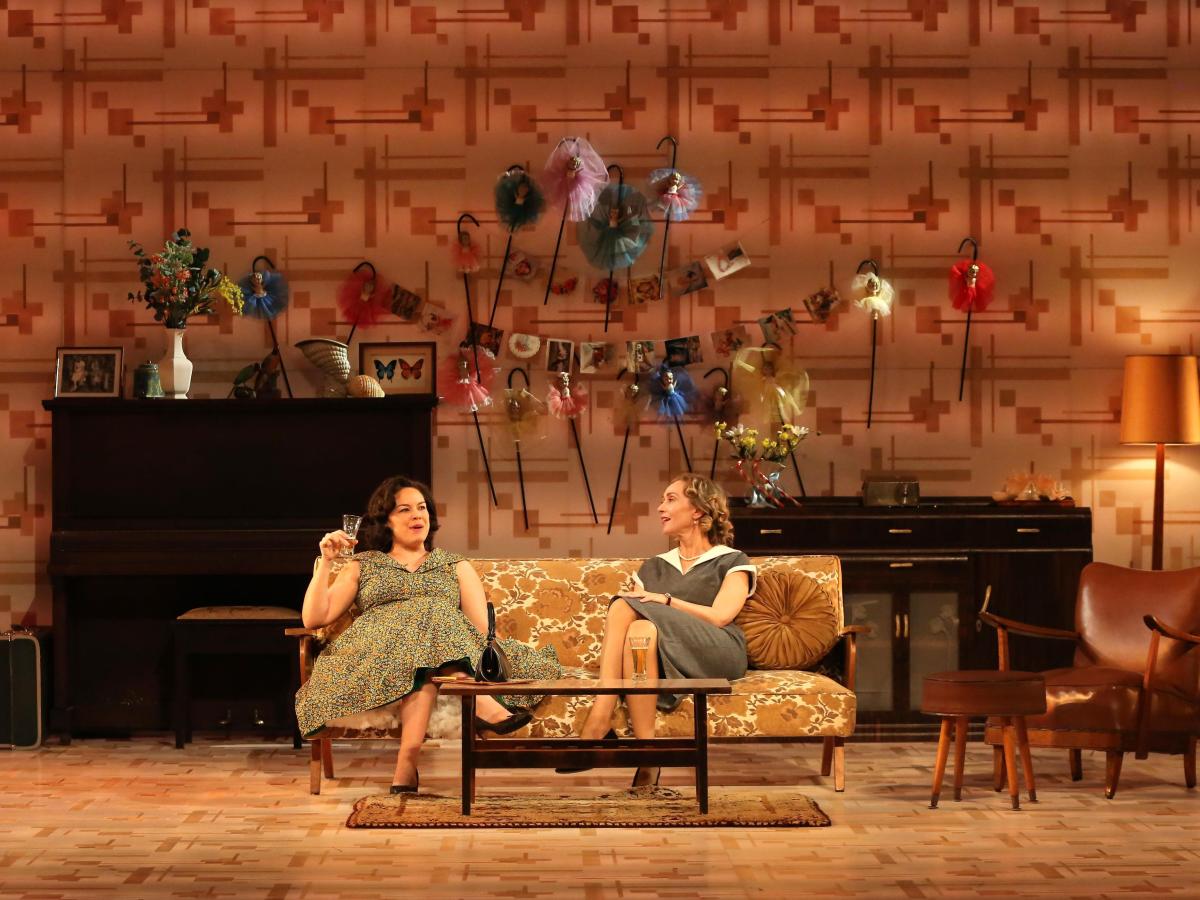Amy Mathews and Alison van Reeken in the Summer of the Seventeenth Doll. Image by Philip Gostelow.
The Summer of the Seventeenth Doll, oft colloquially referred to as ‘The Doll’, is a play that many Australians are familiar with. Frequently revived (over 150 professional productions are listed on the AusStage database), it remains a forceful tragedy that is able to strike nerves even today.
Hope, love, mortality, delusion, class identity and gender equity are all explored within the single setting of a 1950s inner city Melbourne lounge room; the familiar setting ensuring the conflict resonates with audiences even 70 years down the track.
The storyline evolves slowly, exploring one solitary action over a particular setting over a limited slice of a Melbourne summer, and like Shakespeare, offers no opinions for the audience to ponder, but presents experiences to be absorbed and thought through. Well-known theatre critic Katherine Brisbane observed that Lawler’s play is ‘about growing up and growing old and failing to grow up’.

Kelton Pell and Amy Mathews in Summer of the Seventeenth Doll. Image by Philip Gostelow.
Barney and Roo are cane cutters, who for the past 16 summers have come to Carlton to enjoy the off season lay over with two single women, Olive and Nancy.
But this, the 17th summer, will be different. Nancy has grown fed up of her mans nomadic lifestyle, and recently wed a more stable city dweller, thus is missing from lay over festivities. In a grand effort by Olive to introduce Barney to a new partner, we meet the seemingly uptight and moralistic widow, Pearl.
Each visit by the men is marked with the then common, carnival kewpie doll, from which the play’s title is derived. The doll is in essence, the first cue that something is amiss, as they bely Olives firm belief that the lads are all work and no play during work season.
Suspicious and questioning at the initial arrival of the men, straight-laced Pearl soon gets pulled in to the quagmire of relationships, activities and goings on that define this little group. The preceeding difficult work season for Roo and Barney has ramifications that both the core group, and other interloping characters need to come to terms with – Bubba the next door neighbour, young upstart and work contemporary Johnny, and Olives mum who runs the boarding house.

The cast of The Summer of the Seventeenth Doll. Image by Philip Gostelow.
Olive is the main protagonist, and it takes little for the audience to read between seeming reality, and the real drive behind a relationship which sees her living her own life seven months of the year and acting as both keeper and kept woman during the lay over.
The mechanics of being independent, part of a couple, and the roles of men and women in the 50s are explored in depth, and it is easy to see why ‘The Doll’ became an Australian classic, as the world Ray Lawler has constructed is both fantastical and grounded within our urban landscape.
Bruce McKinvens set and costumes take us back to the era as expected, but the ever present lounge room has been modernised, allowing Lighting Designer Trent Suidgeest to convert it into a giant lightbox, cleverly housing the lighting within the set itself.
Lawler’s play embeds the heat and mugginess of both an Aussie summer and the growing stifling atmosphere within the boarding house walls, yet the sharp geometry and scale did little to enhance the claustrophobic tension and actually draw the audience into the text and world as much as hoped – instead acting to separate us and keep us as strict observers. There was a lot more room for passion, humour, frustration, warmth and drama of the words to be highlighted.
Black Swans production of ‘The Doll’ is character strong, is well made and delivered, and although breaks no new ground, will hopefully educate a whole new generation about the intricacies and details of the Australia of old.
Rating: ★★★
Summer of the Seventeenth Doll
By Ray Lawler
Black Swan State Theatre Company
State Theatre Centre of WA
Venue: Heath Ledger Theatre
5 – 20 May
Cast
Jacob Allan
Michael Cameron
Mackenzie Dunn
Vivienne Garrett
Amy Mathews
Kelton Pell
Alison van Reeken
Creatives
Director: Adam Mitchell
Set & Costume Designer: Bruce McKinven
Lighting Designer: Trent Suidgeest
Sound Designer/Composer: Ben Collins
Fight Director: Andy Fraser





